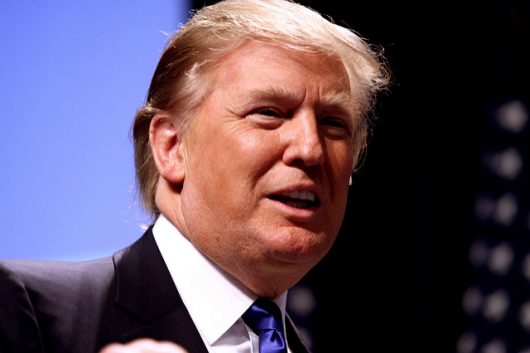A Glimpse of President Trump’s Foreign Aid Policy So Far

President Donald Trump ran his presidential campaign with promises to put “America First” and prioritize the problems in the United States before concerning himself with the issues in other countries. Thus far, over a year into his presidency, President Trump’s administration has materialized campaign promises into actions, which they believe work towards achieving their goal of “Making America Great Again.” On multiple occasions, these actions have threatened the security and influence of U.S. foreign aid and development assistance.
The Administration has taken steps to reduce the size and scale of aid programs like The United States Agency for International Development (USAID) and has also threatened to withhold aid to long-term recipient countries. Countries that receive U.S. aid use the resources they’ve been given for a wide number of projects, but the majority of them focus on poverty-alleviation efforts and development assistance. There are still at least two years left in the Presidency of Donald Trump, but here is a recap of major decisions regarding President Trump’s foreign aid policy during the first half of his administration.
2017
May 10, 2017– President Trump nominates Mark Green as the new USAID administrator. Mark Green received bipartisan support in his nomination as he has often sought to foster bipartisan approaches to U.S. foreign assistance. Green served as the former US Ambassador to Tanzania, and before that, he was acting president of The International Republican Institute.
May 23, 2017– The White House released its 2018 budget proposal: “America First: A Budget Blueprint to Make America Great Again.” The budget put forth by The Trump Administration requested a 33 percent reduction in funding for The State Department and USAID. The budget proposal also intimated plans to merge The State Department and USAID in order to “pursue greater efficiencies through reorganization and consolidation.”
October 2017– There were 97 applicants, already in the pre-employment process with USAID, who were denied foreign placement due to a hiring freeze imposed on the program by Secretary of State Rex Tillerson. Tillerson defended the hiring freeze arguing that it helped, “increase efficiency.”
Dec 20, 2017– President Trump threatened to cut off U.S. aid to any member of The U.N. General Assembly who votes for a resolution condemning his decision to recognize Jerusalem as the capital of Israel. President Trump delivered his threat at a cabinet meeting following a letter sent to the U.N. General Assembly by U.S. Ambassador to The United Nations Nikki R. Haley, in which she warned that the U.S. would note the countries who voted for the resolution. Regardless of the threats made by President Trump, a large number of countries in The U.N. General Assembly still voted not to pursue diplomatic missions in the city of Jerusalem in order to avoid exacerbating existing conflicts between Israel and Palestine.
2018
Jan 2018– The Trump Administration announced its plans to withhold the majority of U.S. aid to Pakistan. The White House cited the Pakistani government’s unwillingness to aggressively confront international terrorists and militant groups in their region as the reason behind the withholding of aid.
Jan 2018– President Trump ordered some $65 million to be withheld from The United Nations Relief and Works Agency (UNRWA). UNRWA provides humanitarian and development assistance to Palestinian refugees. The President ordered the withholding of funds noting concerns over how the organization was run.
Feb 12, 2018– The White House released its 2019 budget proposal: “An American Budget.” The proposal furthers it’s 2017 stance on The State Department and USAID requesting a 26 percent reduction of funds for the programs. The budget revealed a continuing trend in President Trump’s foreign policy to shrink the size of The State Department.
Each new president has their own understanding of the role that foreign aid plays in the advancement of American interests in the international community. President Trump’s foreign aid policy has revealed to America his hesitation to support the distribution of American resources to developing/emerging international markets. The President has emphasized his opinion that more efficient work can be done to improve America by investing more in domestic relief projects and less in international ones.
– Clarke Hallum
Photo: Flickr
